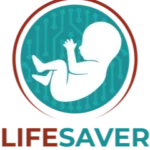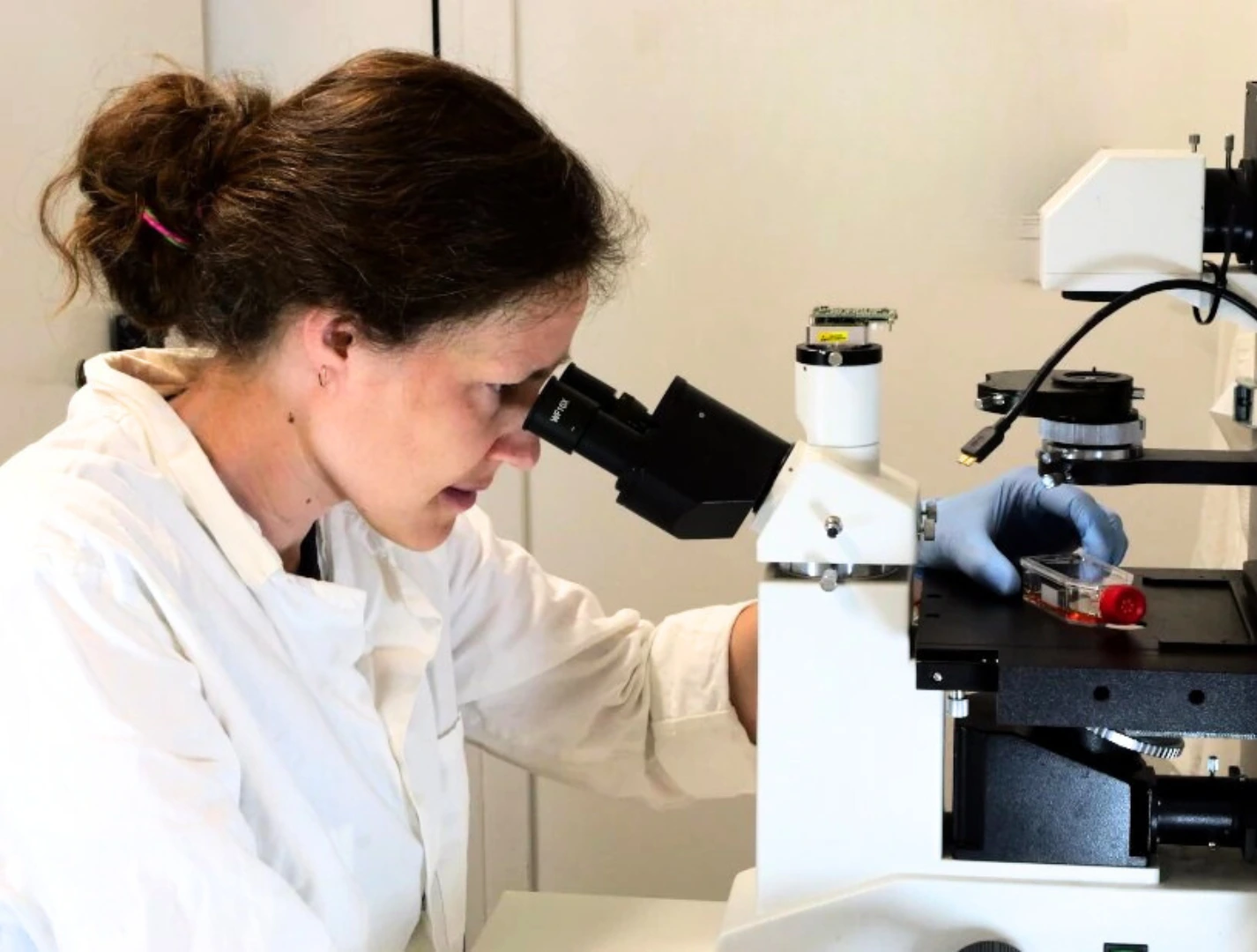New European Bauhaus Facility (NEB)
Work Programme 2026-2027
Writer
Celeste Chidiac, PhD
Keywords
Microfluidic Devices, Intelligent Microfluidics, Artificial Intelligence, Machine Learning
Opening
Feb/May 2026/2027
Deadline
Oct/Dec 2026, Sep/Nov/Dec 2027
Keywords
Intelligent Microfluidics
Deep Learning
Microfluidic Devices
Artificial Intelligence
Machine Learning
Green transition
social inclusion
Circular built environment
Your microfluidic SME partner for Horizon Europe!
We take care of microfluidic engineering, work on valorization and optimize the proposal with you
New European Bauhaus Facility (NEB) 2026-2027
Calls ordered by microfluidic relevance
We have categorized the calls from the work programme of the New European Bauhaus Facility NEB 2026-2027 according to the impact that microfluidics can have on the projects and related topics. We are sharing our analysis in case it can help you with project funding efforts. And, of course, if our expertise can be of use to you, we would be delighted to discuss it further.

How to read the stars in terms of % of microfluidic technologies’ relevance for the call:
By microfluidic relevance, we mean the relevance of using microfluidic technologies for the topic cited. But also, to a lesser extent, what a microfluidic laboratory or SME could contribute to the topic (mainly for calls with low relevance to microfluidic technologies).
Relevance (%) | 90-100 | 80-89 | 70-79 | 60-69 | 50-59 | 40-49 | 30-39 | 20-29 | 10-19 | 0-9 |
Relevance (*) | ***** | **** | *** | ** | * | – | – – | – – – | – – – – | – – – – – |
The work programme draft can be found in the following link: New European Bauhaus Facility
(Details for all topics are provided below, ordered by decreasing microfluidic relevance)
Discover more!
Horizon Europe NEB 2026-2027 Calls ordered by microfluidic relevance
Download the NEB 2026-2027 Call Calendar
** HORIZON‑NEB‑2026‑01‑REGEN‑01 – SUSTAINABLE, INCLUSIVE, AFFORDABLE AND BEAUTIFUL SOLUTIONS FOR THERMAL COMFORT IN BUILDINGS
Type of action: IA
Call: Beautiful, inclusive and sustainable neighbourhoods for communities
Opening 05 May 2026, deadline 01 Dec 2026
Budget (topic, M€): 12.00, Expected EU contribution per project: 4.00, #projects: 3
- Topic focus
- Develop and demonstrate solutions that improve thermal comfort while aligning with NEB principles (sustainable, user‑centred, place‑based).
- Why a microfluidic entity fits
- Micro‑structured heat exchangers (microchannels) and fluidic thermal control layers integrated into façade or ceiling panels for high surface‑area heat transfer.
- On‑chip thermal sensing networks to map occupant‑level comfort (temperature/humidity gradients) with minimal energy use.
- Passive radiative cooling skins and micro‑textured surfaces tested in climate chambers using microfluidic flow control.
- Rapid prototyping of liquid‑circulation components (manifolds, valves) in polymer, aligned with NEB’s emphasis on affordability and circularity.
- In situ LCA‑ready measurement packages (heat flux, moisture) to quantify life‑cycle impacts of envelope innovations.
** HORIZON‑NEB‑2027‑01‑REGEN‑02 – SUSTAINABLE, BEAUTIFUL AND HEALTHY CONSTRUCTION AND RENOVATION SITES
Type of action: RIA
Call: Innovative models for neighbourhoods that integrate beauty, inclusiveness, and sustainability
Opening 05 May 2027, deadline 01 Dec 2027
Budget (topic, M€): 8.00, Expected/project (M€): 4.00, #projects: 2
- Topic focus
- Assess and reduce noise, dust, water contamination, vibration, and visual disturbance from construction/renovation sites.
- Develop ≥2 validated solutions with quantified indicators and draft a European Charter for environmental and working‑environment management of sites.
- Why a microfluidic entity fits
- Lab‑on‑chip aerosol/particulate samplers (silica, PM), and portable micro‑GC/µCE modules for VOCs for on‑site exposure mapping.
- Sweat‑patch microfluidic biosensors to non‑invasively monitor dehydration/heat stress of workers (health & well‑being outcome).
- Microfluidic water‑quality test kits for site runoff (pH, heavy metals, turbidity) that return results in minutes.
- Distributed, low‑power microfluidic air‑sampling nodes enabling dense spatial monitoring during mitigation trials.
** HORIZON‑NEB‑2026‑01‑REGEN‑02 – ADVANCING SUSTAINABLE MAINTENANCE AND REPAIR MEASURES FOR EXISTING BUILDINGS
Type of action: IA
Call: Beautiful, inclusive and sustainable neighbourhoods for communities
Opening 05 May 2026, deadline 01 Dec 2026
Budget (topic, M€): 10.00, Expected/project: 5.00, #projects: 2
- Topic focus
- Develop prospective LCA‑based decision tools for predictive maintenance; create packages of measures integrating circularity, low disruption and compliance.
- Demonstrate on three buildings (incl. one heritage), identify barriers and solutions for widespread application.
- Why a microfluidics entity fits
- Embedded microfluidic leak/moisture sensors for early detection in façades/roofs; micro‑impedance humidity probes for wood/concrete.
- Self‑healing coatings using microfluidic emulsification to fabricate microcapsules for crack‑sealing resins.
- Thin‑film microfluidic NDT heads for chloride/ion migration or carbonation front assessment in concrete.
- Plug‑and‑play condition‑monitoring kits that minimise user disruption, aligned with the topic’s low‑disturbance requirement.
* HORIZON‑MISS‑2027‑07‑CLIMA‑CIT‑NEB‑01 – URBAN NATURE: SUPPORTING RESTORATION OF URBAN ECOSYSTEMS, ALONG URBAN TRANSPORT NETWORKS AND IN THE BUILT ENVIRONMENT
Type of action: IA
Call: Joint Call between the Climate‑Neutral & Smart Cities Mission and the Adaptation to Climate Change Mission
Opening 09 Feb 2027, deadline 16 Sep 2027
Budget (topic, M€): 40.00, Expected/project: 10.00, #projects: 4
- Topic focus
- Large‑scale urban nature restoration along transport networks and built fabric; multi‑city consortia; IA implementation scale.
- Why a microfluidics entity fits
- eDNA-on‑chip biodiversity monitoring in stormwater and green corridors.
- Microfluidic nutrient and pollutant assays for rain‑garden/green‑roof performance.
- Compact microfluidic hydrology sensors for infiltration/retention validation in nature‑based solutions.
* HORIZON‑NEB‑2027‑01‑REGEN‑03 – REVITALISING NEIGHBOURHOODS AROUND EXISTING RAILWAY AND MOTORWAY CORRIDORS
Type of action: IA
Call: Innovative models for neighbourhoods that integrate beauty, inclusiveness, and sustainability
Opening 05 May 2027, deadline 01 Dec 2027
Budget (topic, M€): 11.00, Expected/project: 5.50, #projects: 2
- Topic focus
- TRL 6-8 IA pilots to re‑stitch neighbourhoods severed by linear infrastructure; reduce environmental/health impacts.
- Why a microfluidics entity fits
- Dense air‑quality micro‑labs (NOx, VOCs, ultrafines) for hotspot mapping near corridors.
- On‑chip water‑pollutant sensors for runoff treatment swales/basins.
- Citizen kits leveraging microfluidic strips for participatory monitoring aligned with NEB’s inclusion goals.
* HORIZON‑NEB‑2027‑02‑NEB‑SOIL‑01 – REDUCING SOIL SEALING THROUGH SUSTAINABLE URBAN AND TERRITORIAL DESIGN IN THE NEW EUROPEAN BAUHAUS
Type of action: IA
Call: Joint Call between the NEB Facility and the Soil Deal for Europe Mission
Opening 05 May 2027, deadline 10 Nov 2027
Budget (topic, M€): 15.00, Expected/project: 7.50, #projects: 2
- Topic focus
- IA actions to limit soil sealing, prioritise permeable/green design; JRC may join as zero‑funding beneficiary/associated partner.
- Why a microfluidics entity fits
- Microfluidic soil‑moisture and permeability probes for rapid field assessment.
- On‑chip nutrient/pathogen tests to evaluate quality of infiltrated water.
- eDNA microfluidics to track soil biodiversity before/after de‑sealing.
* HORIZON‑NEB‑2026‑01‑REGEN‑03 – INNOVATIVE SOLUTIONS FOR THE SUSTAINABLE AND BEAUTIFUL USE OF VERTICAL SPACE
Type of action: IA
Call: Beautiful, inclusive and sustainable neighbourhoods for communities
Opening 05 May 2026, deadline 01 Dec 2026
Budget (topic, M€): 15.00, Expected/project: 5.00, #projects: 3
- Topic focus
- Demonstrate innovative uses of roof/airspace (e.g., vertical extensions, rooftop green/food systems) with circularity, LCA of impacts, co‑creation and regulatory feasibility.
- Why a microfluidics entity fits
- Micro‑irrigation / fertigation controllers and plant‑on‑chip sensors for rooftop gardens/urban farming.
- Lightweight microfluidic heat‑exchange panels for compact energy/comfort retrofits in vertical add‑ons.
- Rapid environmental sensing kits to quantify densification trade‑offs (air, water, biodiversity).
* HORIZON‑NEB‑2027‑01‑REGEN‑01 – COMBINING CONVENTIONAL AND INNOVATIVE CONSTRUCTION MATERIALS, PRODUCTS AND TECHNIQUES FOR A SUSTAINABLE AND BEAUTIFUL BUILT ENVIRONMENT
Type of action: RIA
Call: Innovative models for neighbourhoods that integrate beauty, inclusiveness and sustainability
Opening 05 May 2027, deadline 01 Dec 2027
Budget (topic, M€): 12.00, Expected/project: 4.00, #projects: 3
- Topic focus
- RIA (TRL 4-5) to integrate innovative with conventional materials/techniques, advancing circular, low‑impact solutions consistent with standards/regulation.
- Why a microfluidics entity fits
- Micro‑textured surfaces for passive cooling/anti‑fouling or condensate management.
- Microfluidic fabrication of emulsions/foams and bio‑based binders for composites.
- On‑chip durability tests (salt‑spray microreactors, micro‑permeation cells) feeding material screening.
* HORIZON‑NEB‑2026‑01‑PARTICIPATION‑03 – UNDERSTANDING INHABITANT’S EXPERIENCES OF NEIGHBOURHOODS TO SUPPORT THEIR HEALTH AND WELL‑BEING
Type of action: RIA
Call: Beautiful, inclusive and sustainable neighbourhoods for communities
Opening 05 May 2026, deadline 01 Dec 2026
Budget (topic, M€): 15.00, Expected/project: 5.00, #projects: 3
- Topic focus
- RIA to measure, analyse, and translate inhabitants’ experiences for healthier, more inclusive neighbourhoods.
- Why a microfluidics entity fits
- Wearable or patch‑based microfluidic sensors to study heat stress, sweat electrolytes, and hydration in public spaces.
- Portable on‑chip exposome assays (air/water) linking environments with health endpoints.
- Citizen‑science micro‑kits enabling inclusive data collection for design feedback.
* HORIZON‑NEB‑2027‑01‑PARTICIPATION‑03 – NOVEL COMBINATIONS OF KNOWLEDGE AND RESEARCH METHODS TO ADDRESS SOCIAL ISSUES AND ADVANCE A FAIR GREEN TRANSITION OF NEIGHBOURHOODS
Type of action: RIA
Call: Innovative models for neighbourhoods that integrate beauty, inclusiveness and sustainability
Opening 05 May 2027, deadline 01 Dec 2027
Budget (topic, M€): 14.00, Expected/project: 3.50, #projects: 4
- Topic focus
- RIA to combine methods across design/SSH/science/technology for social challenges in the green transition at neighbourhood scale.
- Why a microfluidics entity fits
- Hybrid methods: combine ethnography with on‑chip environmental diagnostics to connect perceived and measured exposures.
- Demonstrate inclusive sensing campaigns co‑designed with residents (schools, seniors).
— HORIZON‑NEB‑2027‑01‑BUSINESS‑01 – MASS CUSTOMISATION OF OFFSITE MANUFACTURED MODULAR CONSTRUCTION COMPONENTS TO TRANSFORM THE EXISTING BUILT ENVIRONMENT
Type of action: IA
Call: Innovative models for neighbourhoods that integrate beauty, inclusiveness, and sustainability
Opening 05 May 2027, deadline 01 Dec 2027
Budget (topic, M€): 10.00, Expected/project: 5.00, #projects: 2
- Topic focus
- Develop & demonstrate solutions for customizing offsite mass-manufactured modules, applying BIM and distributed manufacturing. Validate across three or more applications/countries, evaluating environmental/social/cultural value, as well as scalability.
- Why a microfluidics entity fits
- Drop‑in microfluidic thermal panels or embedded sensing (leak detection, humidity) as optional module variants.
- Rapid polymer microfabrication to customize module inserts for different climates/uses.
— HORIZON‑NEB‑2026‑01‑PARTICIPATION‑02 – INNOVATIVE APPROACHES FOR THE SPATIAL DESIGN OF NEIGHBOURHOODS
Type of action: IA
Call: Beautiful, inclusive and sustainable neighbourhoods for communities
Opening 05 May 2026, deadline 01 Dec 2026
Budget (topic, M€): 10.50, Expected/project: 3.50, #projects: 3
- Topic focus
- Demonstrate methods that integrate user perspectives in spatial design and deliver social/cultural/environmental value.
- Why a microfluidics entity fits
- Environmental micro‑sensing (air/water/noise) to inform design trade‑offs; fast prototyping of interactive urban furniture with embedded sensing supporting place‑based evaluation.
— — HORIZON‑MISS‑2026‑04‑CIT‑NEB‑B4P‑CCRI‑03 – INTRODUCING CIRCULAR ECONOMY MODELS IN THE CONSTRUCTION SECTOR, FROM BUILDINGS TO CITY SCALE
Type of action: IA
Call: Supporting the implementation of the Climate‑Neutral and Smart Cities Mission
Opening 04 Feb 2026, deadline 08 Oct 2026
Budget (topic, M€): 47.50, Expected/project: 9.50, #projects: 5
- Topic focus
- Large‑scale circular economy models in construction; strong city implementation orientation.
- Why a microfluidics entity fits
- Process‑intensified manufacturing of bio‑based additives using microreactors; quality‑control micro‑assays for recycled materials; contributions are supportive rather than core.
— — HORIZON‑NEB‑2026‑01‑BUSINESS‑03 – APPROACHES TO REUSE VACANT, OBSOLETE AND UNDERUTILISED SPACES FOR NEIGHBOURHOOD COMMUNITIES
Type of action: RIA
Call: Beautiful, inclusive and sustainable neighbourhoods for communities
Opening 05 May 2026, deadline 01 Dec 2026
Budget (topic, M€): 9.00, Expected/project: 4.50, #projects: 2
- Topic focus
- Assess needs, co‑create reuse processes, identify funding/financing, validate in ≥3 neighbourhoods, quantify social/cultural/environmental/economic benefits.
- Why a microfluidics entity fits
- Provide STEM-maker reuse concepts (e.g., pop-up micro-labs for citizen monitoring) and environmental testing kits to derisk re-occupancy.
— — HORIZON‑NEB‑2027‑01‑PARTICIPATION‑01 – THE TRANSFORMATIVE POTENTIAL OF CO‑GOVERNANCE IN THE GREEN TRANSITION OF NEIGHBOURHOODS
Type of action: IA
Call: Innovative models for neighbourhoods that integrate beauty, inclusiveness, and sustainability
Opening 05 May 2027, deadline 01 Dec 2027
Budget (topic, M€): 10.72, Expected/project: 5.36, #projects: 2
- Topic focus
- Demonstrate co‑governance approaches and multi‑actor engagement to accelerate green transition decisions at neighbourhood scale.
- Why a microfluidics entity fits
- Contribute evidence platforms (community sensing data) to support deliberation and outcome tracking; role is facilitative.
— — — HORIZON‑NEB‑2027‑01‑PARTICIPATION‑02 – INTERGENERATIONAL NEIGHBOURHOODS AND COMMUNITIES ALIGNED WITH THE NEW EUROPEAN BAUHAUS
Type of action: IA
Call: Innovative models for neighbourhoods that integrate beauty, inclusiveness, and sustainability
Opening 05 May 2027, deadline 01 Dec 2027
Budget (topic, M€): 10.50, Expected/project: 5.25, #projects: 2
- Topic focus
- Demonstrate methods and solutions to identify and improve intergenerational character of neighbourhoods; IA with lump‑sum.
- Why a microfluidics entity fits
- Minor: simple environmental micro‑sensing to compare age‑specific exposure profiles (playgrounds vs. senior routes).
— — — HORIZON‑NEB‑2026‑01‑PARTICIPATION‑01 – ADDRESSING HOMELESSNESS THROUGH HOUSING‑LED APPROACHES ALIGNED WITH THE NEW EUROPEAN BAUHAUS
Type of action: IA
Call: Beautiful, inclusive and sustainable neighbourhoods for communities
Opening 05 May 2026, deadline 01 Dec 2026
Budget (topic, M€): 12.90, Expected/project: 4.30, #projects: 3
- Topic focus
- Housing‑led interventions and services to reduce homelessness; align design with NEB values; neighbourhood‑level implementation.
- Why a microfluidics entity fits
- Peripheral: air/water quality kits for shelters and temporary housing; training packages for community monitoring.
— — — HORIZON‑NEB‑2026‑01‑BUSINESS‑01 – STRUCTURALLY ADDRESSING HOMELESSNESS THROUGH INTEGRATED SOCIAL INFRASTRUCTURE AND SERVICES IN NEIGHBOURHOODS
Type of action: IA
Call: Beautiful, inclusive and sustainable neighbourhoods for communities
Opening 05 May 2026, deadline 01 Dec 2026
Budget (topic, M€): 10.50, Expected/project: 3.50, #projects: 3
- Topic focus
- System‑based integration of social infrastructure/services; validate approach across ≥5 countries; develop recommendations.
- Why a microfluidics entity fits
- Limited: provide low‑cost health/environment monitoring (IAQ, water) to inform the design of social infrastructure.
— — — HORIZON‑NEB‑2026‑01‑BUSINESS‑02 – UNDERSTANDING CAPITAL MARKET DYNAMICS FOR INCREASED INVESTMENT IN NEW EUROPEAN BAUHAUS PROJECTS IN NEIGHBOURHOODS
Type of action: RIA
Call: Beautiful, inclusive and sustainable neighbourhoods for communities
Opening 05 May 2026, deadline 01 Dec 2026
Budget (topic, M€): 7.00, Expected/project: 3.50, #projects: 2
- Topic focus
- Analyse demand/supply sides of capital; develop ≥2 investment solutions (e.g., place‑based impact investing; digital financial instruments).
- Why a microfluidics entity fits
- Minor role: provide impact‑measurement data streams (from sensors) to underpin outcome‑based finance KPIs.
— — — — HORIZON‑NEB‑2027‑01‑BUSINESS‑02 – INNOVATIVE MODELS FOR COLLECTIVE COMMUNITY INVESTMENT AND OWNERSHIP
Type of action: RIA
Call: Innovative models for neighbourhoods that integrate beauty, inclusiveness, and sustainability
Opening 05 May 2027, deadline 01 Dec 2027
Budget (topic, M€): 10.50, Expected/project: 3.50, #projects: 3
- Topic focus
- Design and test community investment/ownership models for NEB projects.
- Why a microfluidics entity fits
- Very limited: provide evidence dashboards (sensing‑derived) to support community investment narratives.
— — — — HORIZON‑NEB‑2027‑01‑BUSINESS‑03 – ANTICIPATING THE LONG‑TERM FUTURE OF NEIGHBOURHOODS IN LINE WITH THE NEW EUROPEAN BAUHAUS
Type of action: RIA
Call: Innovative models for neighbourhoods that integrate beauty, inclusiveness, and sustainability
Opening 05 May 2027, deadline 01 Dec 2027
Budget (topic, M€): 7.00, Expected/project: 3.50, #projects: 2
- Topic focus
- Participatory foresight: analyse long‑term drivers, co‑create scenarios/visions, validate approach in ≥3 countries.
- Why a microfluidics entity fits
- Tangential: contribute quantitative environmental baselines (sensor data) to inform foresight exercises.
Find all these information in the pdf below
The MIC already brings its expertise in microfluidics to Horizon Europe:
H2020-NMBP-TR-IND-2020

Microfluidic platform to study the interaction of cancer cells with lymphatic tissue
H2020-LC-GD-2020-3

Toxicology assessment of pharmaceutical products on a placenta-on-chip model
FAQ - Horizon Europe NEB 2026-2027 ordered by microfluidic relevance
What's the deal with the NEB strand - how does it matter to folks working on tiny fluid systems?
NEB is at the spot where green thinking, everyone’s included, yet it looks good. Backs down-to-earth answers to actual issues – like clean water, fresh air, power sources, stuff we use daily, reuse loops, construction methods, too. Microfluidics slides right into this scene. Picture tiny setups detecting changes, keeping tabs, cleaning up messes, maybe crafting items nearby instead. Out in the open, not tucked away – woven into homes and offices instead. This makes tech part of everyday routines.
What sort of tiny fluid experiments usually get good ratings from NEB?
The kind you can touch, not just imagine – things folks interact with every day. Like stuff they spot around them or get hands-on with
- Water reuse units tucked inside walls or perched on roofs.
- Small gadgets check the air near structures without making noise.
- Tiny reactors making stuff near the places it’s used.
- Tests measuring how cozy or healthy indoor spaces feel.
- Tiny tech inside helping create eco-friendly building stuff.
- Test programs launched at schools, also in hospitals, even in social housing.
If this makes things clearer for regular people, then you’re moving forward just fine.
What level of readiness should the tech have?
Mixed preparedness works okay – though mid-stage tech usually hits the mark, especially when there’s an actual test running inside a structure or local area.
- New tech needs a working example – something real enough to believe in.
- In later stages, technology needs to highlight how it’s set up – along with ongoing maintenance – and real experiences from people using it.
Some folks gotta move across it, feel it under their hands, or just keep an eye on things using a display close by – this real-world link makes a difference.
What makes a solid microfluidics group work well?
A mix that works. Here’s what you need:
People who design tiny fluid systems, along with makers who craft real devices.
People who use it – like water companies, hospitals, apartment managers, or urban testing sites.
People skilled in layout or structure, figuring out ways to blend technology into actual environments.
Social researchers can track how included folks feel within a group.
Besides, get a town or service provider involved right away. A couple of solid locations beat piles of wishy-washy notes saying they’re “interested.”
What issues tend to catch small-scale fluid teams off guard, moving from bench tests to early production runs?
Happens every now and then. Crews downplay gunk buildup, skip maintenance schedules, and overlook the exact spot where the setup will go. Now and again, zero thought goes to who runs things once the job’s done.
Sort out these issues fast. Get ahead of biofouling by planning early, establishing maintenance routines, keeping backup parts ready, building solid housings that actually work, lining up approvals before launch, and covering running costs once funding runs dry, because awesome gear often fails right after the spotlight fades.
Do small businesses actually matter when it comes to such initiatives?
Folks, tiny agile shops work quickly. When it comes to adjusting design details or shaping user screens, they’ve got the edge, and they get test runs live without delays. From what we’ve seen over at MIC, bringing in a niche expert bumps win chances by a factor of 2. Judges tend to buy into teams blending technical chops with real-world rollout smarts.
What sort of evidence shows testers that it runs beyond the lab?
Proof that makes them believe it’s real.
Past test runs, no matter how small, prove you’re serious.
- Quick clog trials along with long-term pump or valve testing make a difference.
- Actual field data on calibration shifts appears solid.
Simple drawings that show how to replace or fix parts easily? Super helpful when you need quick swaps.
- People stuff counts – display how long setup takes, what gear’s required, then toss in a quick upkeep example.
Put everything into a risk log that feels more like a how-to guide than a funding rule.
What’s the best way to set up the work plan?
Stay neat yet clear
- WP1: Work with real people to shape practical solutions together
- WP2: Tiny fluid system – how liquids move, what it’s made of, bigger versions
- WP3: Mechatronics, firmware, data links
- WP4: Shaping products so they work well where people live and operate
- WP5: Test runs – getting sites ready, sorting permissions, setting up gear, checking everything works
- WP6: Social and impact evaluation
- WP7: Exploitation, IP, regulatory steps
- WP8: Management and ethics
No extra talk. Straight paths, quick cycles, yet clear signs of moving forward.
What about rules or safety?
Start thinking about it sooner rather than later. Make sure you handle clean air and safe water rules, along with wiring hazards, electromagnetic noise issues, plus laws tied to pressure systems or germs. Lay out how you’ll meet the requirements – like going the CE route – then pick someone to take charge. If stuff goes into shared spaces, don’t forget to account for damage from misuse and meddling, while also protecting personal info. Besides, skip tucking it away in some extra section – this should sit right in the heart of the tale.
Where's MIC in this mix, plus how’s it actually working?
MIC handles the tech side for a bunch of these efforts. Our team creates chips, cartridges, and tiny reactors. Pumps get hooked up to valves and sensors, too. Automation handles tests and chemical processes. Afterward, folks who aren’t experts can handle upkeep without stress. Besides that, we guide groups in forming ideas and tracing results. Past work on Horizon efforts tends to boost ratings and performance. Over time, we figured out how to stay precise with tech while keeping documents neat.



